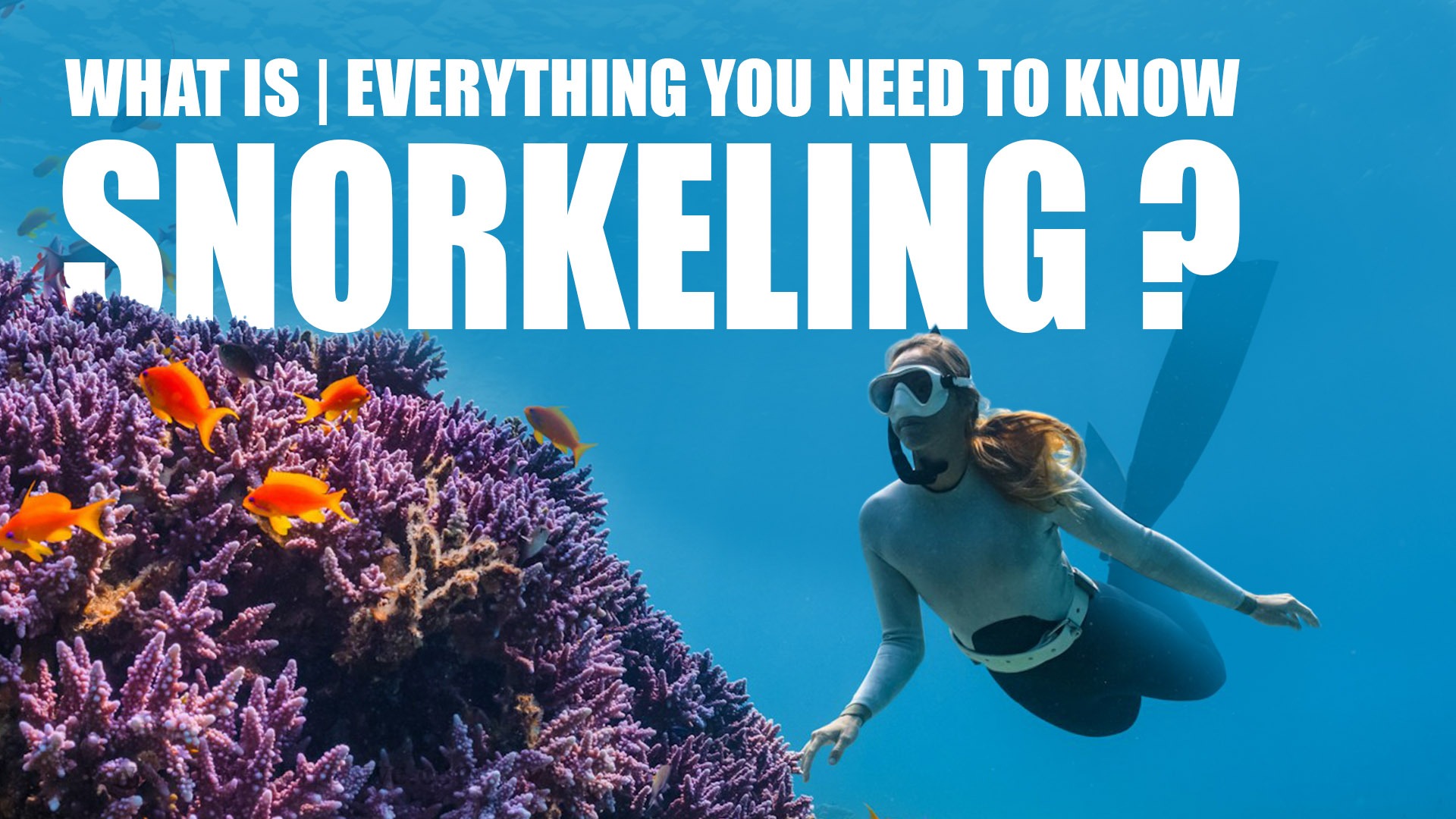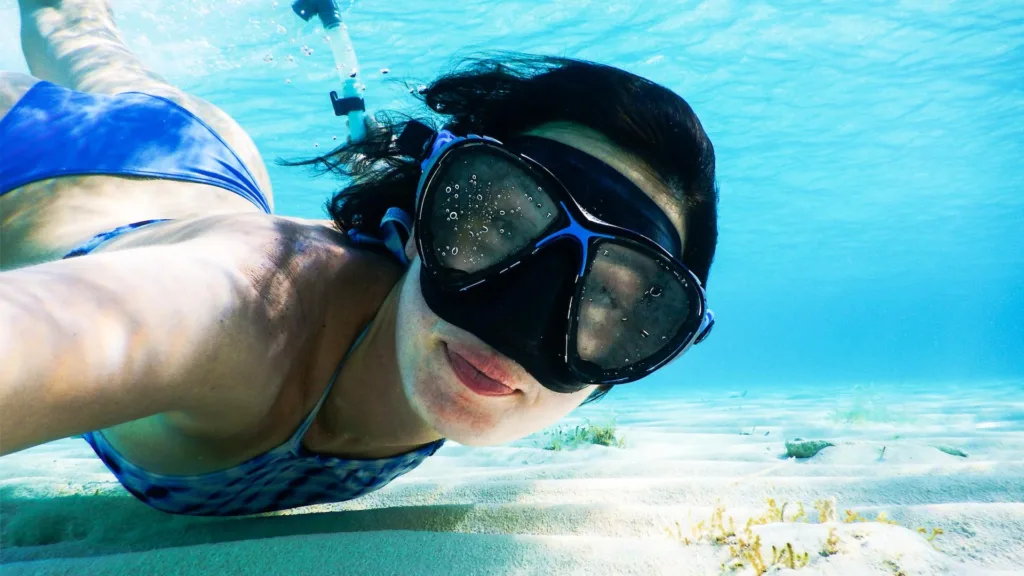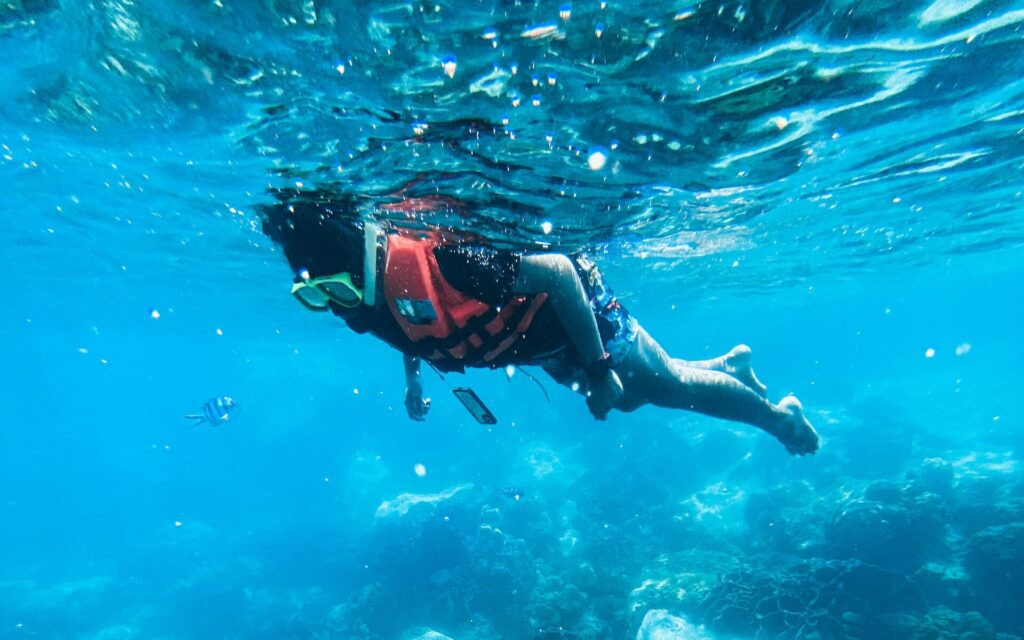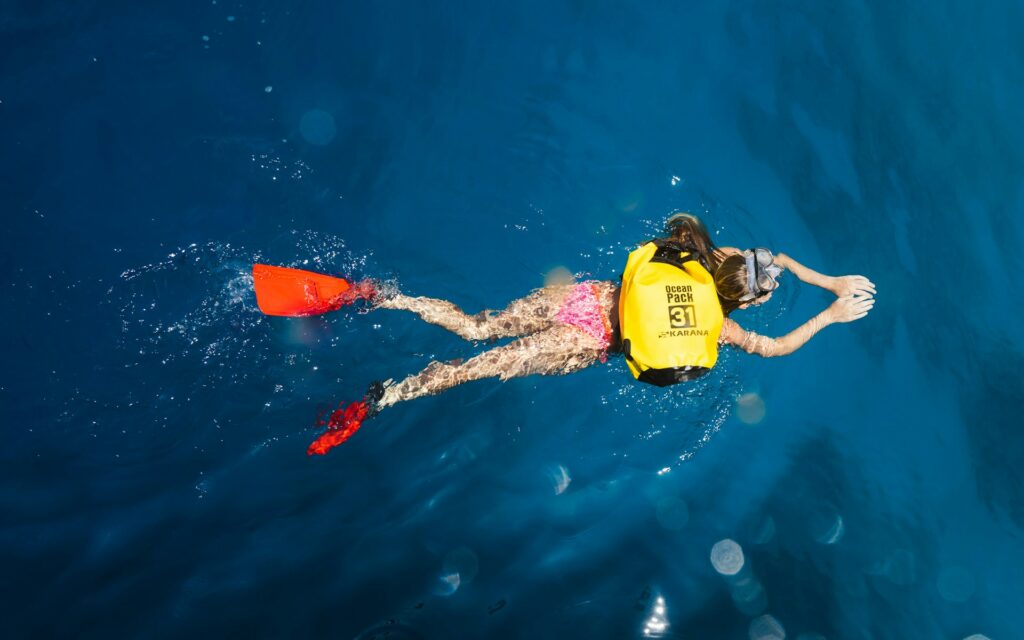The ocean is vast and mysterious. There are so many different kinds of creatures and plants, and mysteries have yet to be found in the big blue ocean. Are you curious about the mysteries the ocean is hiding? Do you want to explore the amazing sea creatures and plants, or want to escape from your busy life, dive into the ocean, and relax? But how can you do it in the easiest way and with less equipment? Your comfortable solution is snorkeling. Snorkeling is fun, cheap, and has almost no sea dangers. In this article, we are going to discuss what is snorkeling, snorkeling basics, what do you need to snorkel, safety in snorkeling, the best places for snorkeling, and more.
- What is snorkeling? It is something more than just floating on the water surface.
- Snorkeling vs other water sports
- Essential snorkeling gear
- Different snorkel types at a glance
- Best snorkel gear for beginners
- How to snorkel (Step by Step Guide)
- Snorkeling for non-swimmers
- Answers For Frequently Asked Questions
- Conclusion
- Stay connected! Join us on WhatsApp!
- Join our newsletter for everyday updates!
What is snorkeling? It is something more than just floating on the water surface.
Snorkeling is basically swimming at the water’s surface. But you snorkel with special equipment. Snorkeling is a very simple water activity. All you need to do is get a mask, snorkel, and sometimes fins. Is snorkeling a sport? Snorkeling is more about enjoying the underwater world than competing against others. So, it is considered a leisure activity more than sport. You mostly float on the surface and explore the reef at your own pace, so you do not need to be an amazing swimmer. As long as you can swim a little and breathe through a snorkel, you can go snorkeling.
Snorkeling vs other water sports
Let’s compare snorkeling to other water sports to get a better idea of what it is like.
Freediving vs snorkeling
Freediving is like skydiving underwater! You need training, focus, and special techniques to hold your breath for long periods and dive deep to freedive. But snorkeling is all about relaxing and exploring amazing things underwater. Anyone of any age can snorkel. You do not need any special training; just grab your mask, snorkel, and fins and float around.
What is difference between snorkeling and scuba diving?
The difference between snorkeling and scuba diving marks on the diving depth, requirements, and equipment. Want to go deep? You can explore way deeper underwater than snorkeling with scuba gear. Scuba diving also needs more equipment than snorkeling, like a self-contained underwater breathing apparatus (SCUBA), a buoyancy control device (BCD), and submersible computers or gauges.
Your kids must also be of a certain age to be eligible for scuba diving. For more information, you can read our article on How Old Do You Have To Be To Scuba Dive? Here. Snorkeling gear is simpler (mask, snorkel, fins), and you can explore amazing things near the surface. You can sometimes dive a little deeper, but not as deep as scuba divers. For more information, you can read our article on snorkeling vs scuba diving.
Essential snorkeling gear
What do you need to snorkel? You will need a few key equipment to have a safe, comfortable, and enjoyable snorkeling adventure.
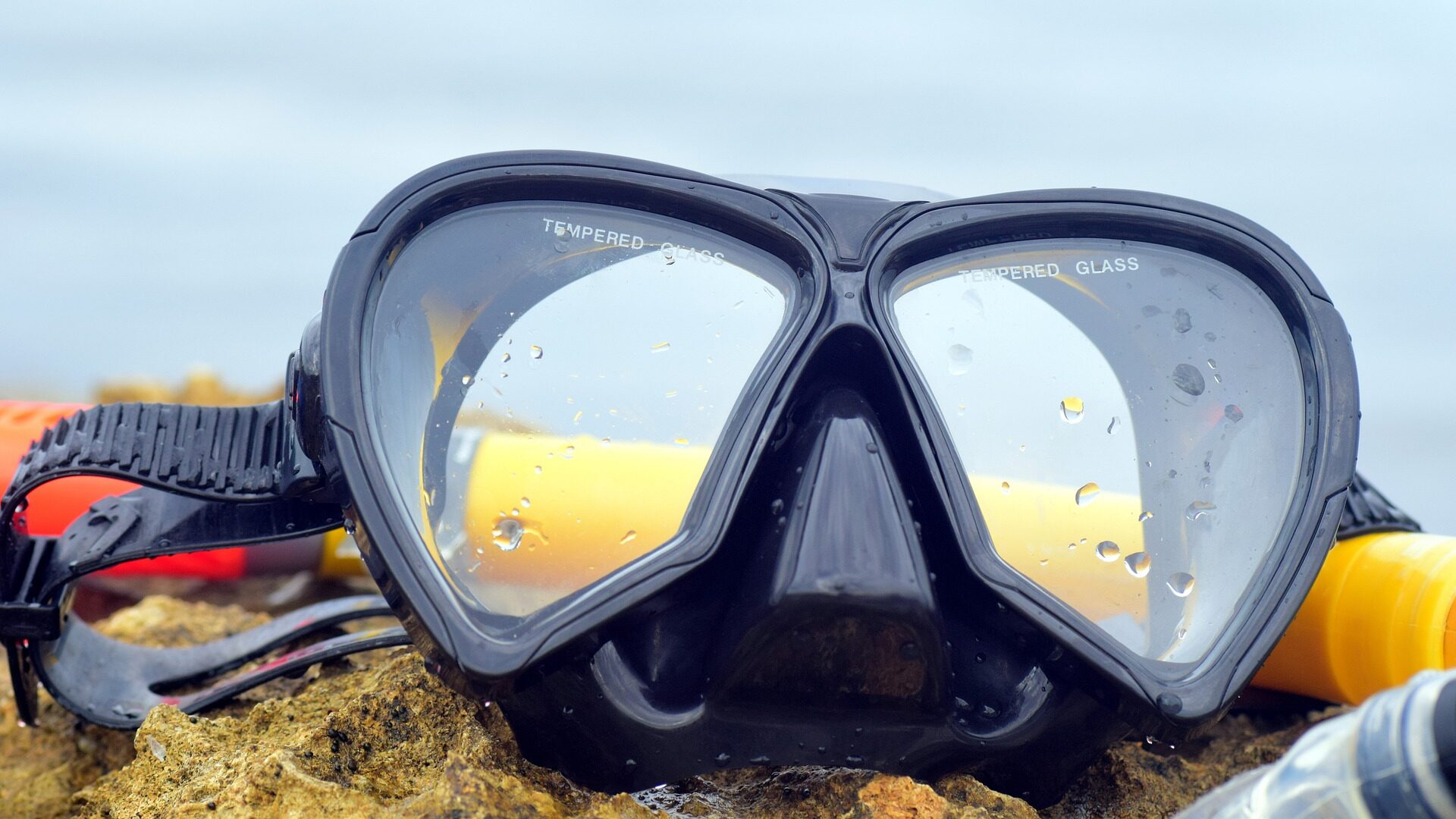
Mask
This is like your underwater window. A good mask should comfortably fit on your face without leaking. You should also be able to get a clear view of all the amazing fish and coral through your mask.
Are full face masks good for snorkeling? Full-face masks are popular among snorkelers since they fulfill all the requirements we mentioned above for how do snorkeling masks work. You can breathe casually through your nose or mouth with a full face mask without a mouthpiece. However, there are safety concerns regarding these trendy masks. So, you should consider this thoroughly before you buy a full-face snorkel mask. For more information, you can read our article, are full face snorkel masks safe here>>
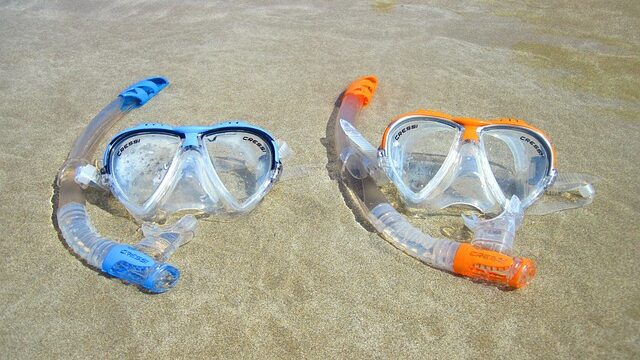
Snorkel
This is your underwater breathing tube. With this J-shaped tube, you can breathe while floating face-down. It is like a straw for air. There are different types of snorkels, so choose one that’s comfortable and keeps water out.
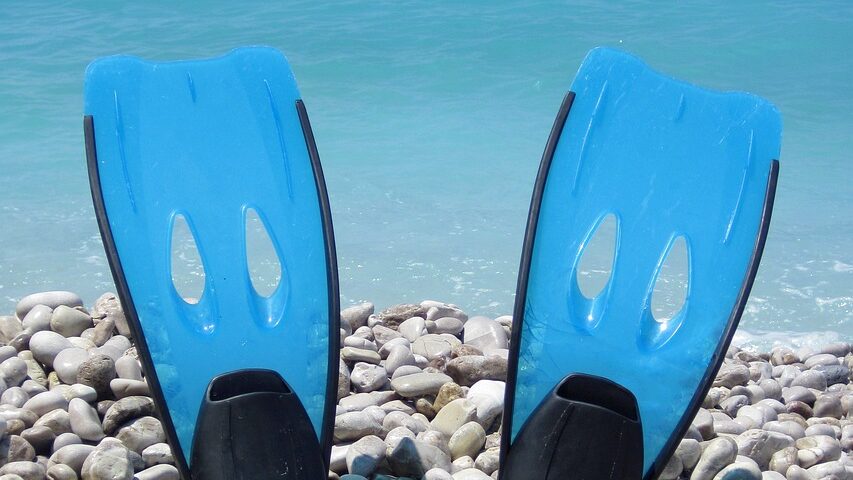
Fins
Fins are like flippers for your feet. You can move through the water with less effort wearing fins. So you can explore farther and have more fun without getting tired.
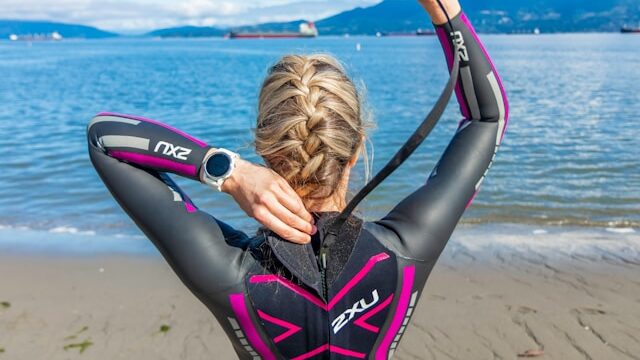
Sun and cold protection
Depending on the water temperature, you might also need a wetsuit (for cold water), rashguard (for sun protection), or other clothes to keep you comfortable.
For more information, you can read our article on the snorkeling gear list here.
Different snorkel types at a glance
All snorkels help you breathe while you are face-down in the water, but there are different types of snorkels for different situations.
Should you buy a long snorkel? Most snorkels are around 12-15 inches long. A longer snorkel could create more “dead air” space and make breathing harder. So always go for a short snorkel. For more information, you can read our article on what is the longest snorkel you can use.
Stay connected! Join us on WhatsApp!
Connect with us directly on WhatsApp for instant updates! Tap the button below to join our WhatsApp community and stay in the loop with all the latest news and Updates.
Best snorkel gear for beginners
Are you starting snorkeling? Then, you have to have the right gear from the beginning to have a fun and comfortable experience. Check out the following best equipment for snorkeling for beginners.
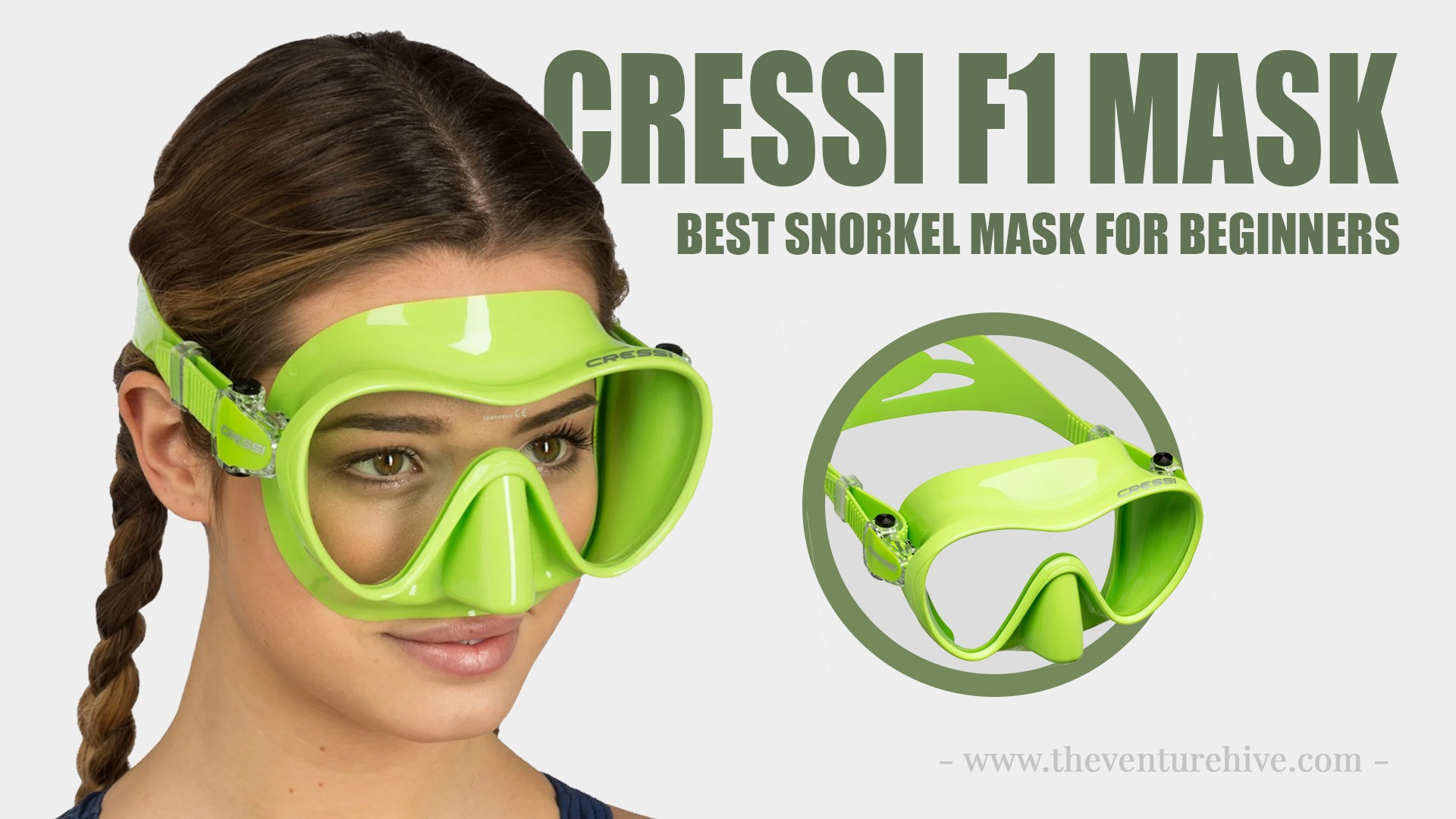
Cressi F1 mask
The Cressi F1 mask is very popular among beginners. It fits well, helps you see clearly underwater, and keeps water out. Some beginners like this mask because they can easily use it without any errors.
Specs & Features
Why we like this Mask
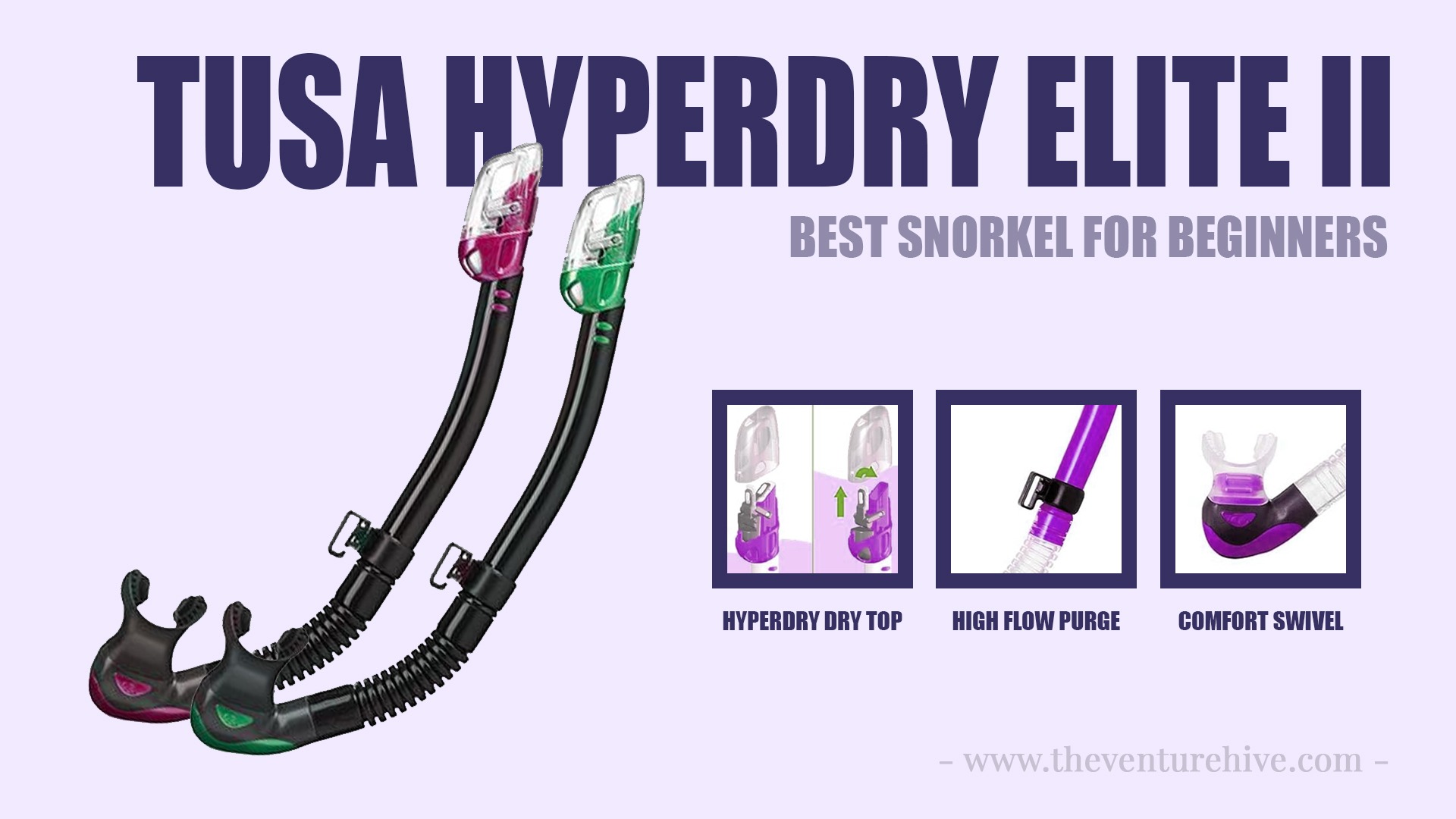
TUSA Hyperdry Elite II Snorkel
TUSA SP 0101 Hyperdry Elite II dry snorkel is a great beginner option. Why? You do not have to worry about clearing water out of the snorkel.
Specs & Features
Why we like this Snorkel
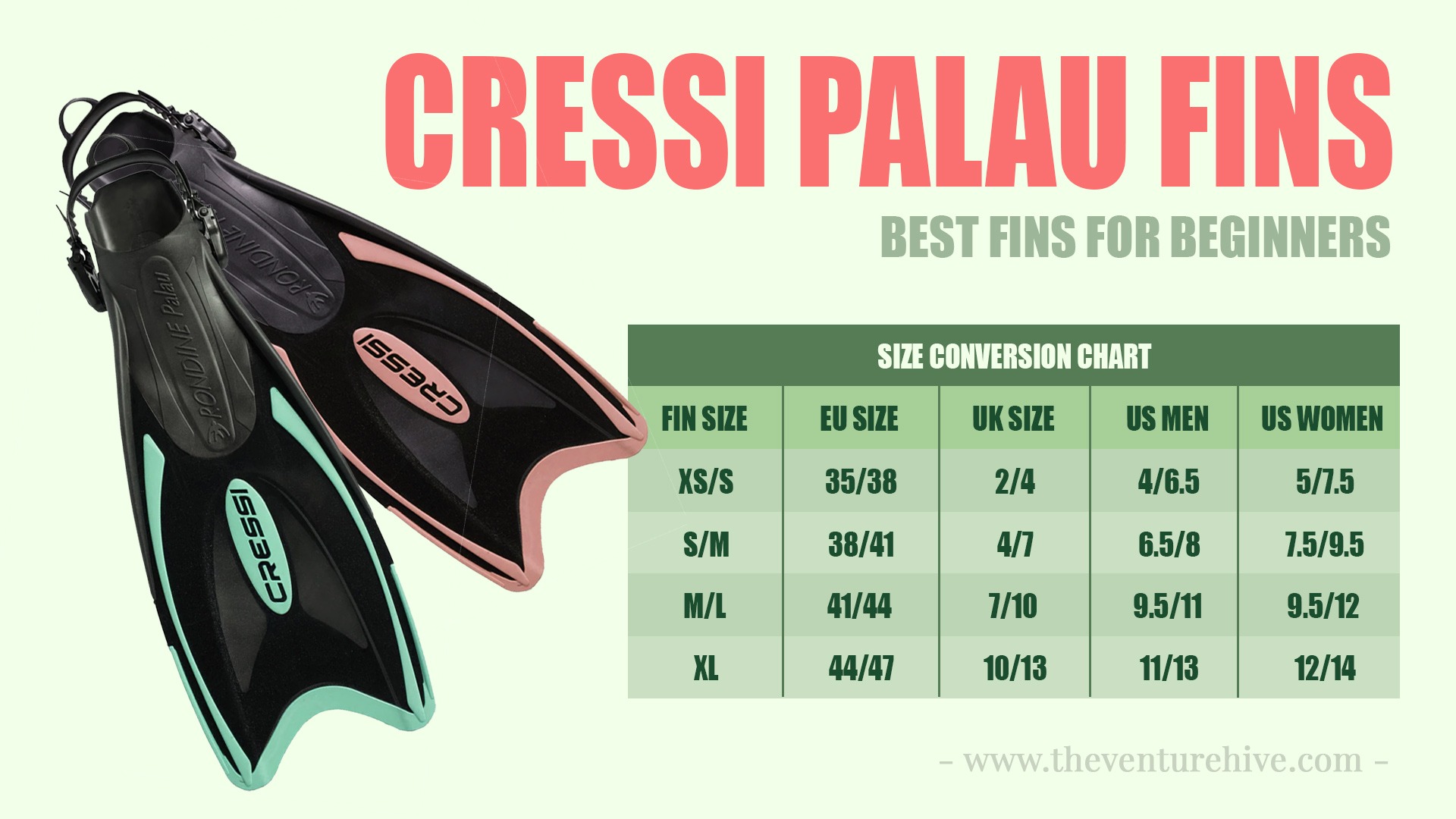
Cressi Palau Fins
The Cressi Palau Short Fin Set is perfect for beginners. They are easy to use, and travel-friendly, so you do not have to worry about packing them in your bag. They might be short, but they will still give you enough power to explore the reef.
Specs & Features
Why we like this Fins
How to snorkel (Step by Step Guide)
Now you have covered what do you need for snorkeling part. Let us learn how to snorkeling properly here. Snorkeling may look like a simple activity. But you need to follow proper techniques to have an enjoyable and safe experience. Here is a step-by-step guide to help you get started.
Is snorkeling hard? Tips for easy snorkeling
Snorkeling is an amazing water activity, but it might be a little scary if you are a beginner. But do not worry, these snorkeling tips can make your underwater adventure more enjoyable and help you learn how to snorkel safely.
For more information, you can read our article on how does snorkeling work.
Snorkeling for non-swimmers
Snorkeling is like opening a secret door to a whole new world under the water. You might think you need to be a professional swimmer to do this, but that is not really true. With a bit of prep and safety measures, you can still enjoy the magic of snorkeling even if you cannot swim.
So, the nonswimmer’s most asked question, can I snorkel if I cant swim? The answer is a big yes! You can use flotation devices like life jackets or vests to float easily on top of the water. Again, you do not need any swimming skills. Just pick a spot where the water is shallow enough so you can stand up if you need to. Do you need to know how to swim or snorkel? Swimming makes snorkeling a little easier, but it is not totally necessary. If you can already float on your back, breathe calmly, and maybe even kick your legs a little, that’s a great start! Knowing how to swim a little freestyle or breaststroke can give you more freedom to move around, but even basic skills can help you enjoy snorkeling more. Actually, any swimming ability is a bonus when snorkeling. For more information, you can read our article on do you need to know how to swim to snorkel.
You cannot swim at all? Do not worry. As we said, swimming for snorkeling is not essential. There are other ways to make snorkeling even easier.
For more information, you can read our article on can non swimmers snorkel.
Join our newsletter for everyday updates!
Best places for snorkeling
We covered many aspects of snorkeling by now. But what are the best places to snorkeling? Over 70% of the Earth’s surface is covered by water, so there are countless breathtaking destinations for snorkeling enthusiasts to explore. Here are some of the best places out of them.
Baa Atoll, Maldives
Imagine crystal-clear waters teeming with colorful fish and vibrant coral reefs. That is what you will find in Baa Atoll, a UNESCO World Biosphere Reserve. As you explore the area’s lagoons and channels, you might even see majestic manta rays, reef sharks, and schools of tropical fish. The warm, shallow sea waters make it perfect for both beginners and experienced snorkelers. Read More>>
Silfra Fissure, Iceland
Have you ever snorkeled between two continents? Silfra Fissure, Iceland, is a unique geological wonder that lets you float in a crack between the North American and Eurasian tectonic plates. The water is incredibly clear and offers visibility up to 100 meters (328 feet). Read More>>
Cabo Pulmo National Marine Park, Mexico
This protected area on Mexico’s Baja California peninsula has some of the most diverse coral reefs in the Sea of Cortez. Here, you can snorkel with schools of tropical fish, sea turtles, and even whale sharks. If you are an eco-conscious traveler, you will love the park’s clean waters and thriving marine life. Read More>>
Jellyfish Lake, Palau
Have you ever wanted to swim with millions of jellyfish? Jellyfish Lake, Palau, is a unique saltwater lake home to millions of harmless golden jellyfish. Read More>>
Hol Chan Marine Reserve, Belize
This protected area off the coast of Belize is a haven for every snorkeler. You can see various marine life here, including nurse sharks, stingrays, sea turtles, and colorful coral formations. That’s not all. You can explore the wonders of the Mesoamerican Barrier Reef System here. Read More>>
Kornati National Park, Croatia
Here, you can snorkel in clear turquoise waters and see sunken shipwrecks, caves, and colorful reefs teeming with fish. But that’s not all. The park’s sheltered bays and calm waters are perfect for a family snorkeling adventure. Read More>>
Gili Islands, Indonesia
You will find these three tiny islands Off the coast of Lombok in Indonesia. They are known for some of the best snorkeling in the area. The water is calm and clear, and the coral reefs are full of life. If you are wondering what can I see while snorkeling, you might see sea turtles, reef sharks, and many different types of colorful fish. Read More>>
Phi Phi Islands, Thailand
This island group in Thailand is famous for its stunning scenery and amazing snorkeling. The water is crystal clear, and the coral reefs are full of colorful fish, sea turtles, and even the occasional reef shark. Read More>>
Dry Tortugas National Park, Florida
This is a hidden gem for snorkelers. You can visit this remote national park 70 miles off the coast of Key West, Florida. Here, you can discover the historic Fort Jefferson and snorkel in clear waters with vibrant coral reefs, shipwrecks, and tropical fish. Read More>>
Isla Catalina, Dominican Republic
This beautiful island off the Dominican Republic is a snorkeler’s dream. The seawater is crystal clear, the coral reefs are vibrant, and plenty of marine life exists to explore. You can snorkel among colorful fish, see friendly sea turtles, and explore hidden coves and underwater caves. Read More>>
Pasikudah, Sri Lanka
Pasikudah is well-known for its sapphire-colored seawater and the longest stretches of shallow reef coastline, which is one of the few places in the world. Pasikudah is ideal for beginner snorkelers. If you have experience, then, of course, you can enjoy snorkeling to the fullest. Read More>>
Answers For Frequently Asked Questions
Here are some of the most asked questions about underwater snorkel explorations.
Conclusion
In this article, we discussed what is snorkeling, snorkeling gear, tips, and the best places for snorkel with a complete guide on how to snorkel. Snorkeling is an amazing water activity to explore the underwater world with fewer risks and equipment. Everyone of all ages can snorkel without any training. Do not forget about your safety while exploring amazing fish, coral reefs, shipwrecks, and other surprises the underwater world offers.
